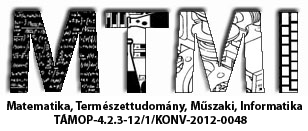Phytocannabinoid exerts multiple effects on human hair follicles and hair follicle derived primary keratinocytes
Előadás adatai
Recent studies revealed the high impact of the endocannabinoid signaling on the physiology of skin and its appendages. Cannabinoid receptor (CB1) activation by endo/phyto-cannabinoid (EC/PhC) leads to the promotion of catagen phase of hair cycle in hair follicles (HF). The activation of transient receptor potential ion channels (TRPV1/3) exert similar negative effects on hair follicle life cycle. Alongside the psychoactive THC, Cannabis Sativa contains in excess of 100 different PhCs whose variation in molecular structure, yield a spectrum of potentially different effects on our studied receptors.
Therefore, in our current study we aimed to explore whether a PhC (which cannot be named due to intellectual property protection) affects the biology of the HFs.
Intact human HFs were employed to assess the effect on hair shaft elongation and H&E stained sections of HFs to define hair cycle stage. To test the effects on cellular level, human HF derived primary outer root sheath keratinocytes (ORSK) were used. Effects on ORSK viability was demonstrated by colorimetric MTT assay, whereas necrotic and apoptotic cellular processes were detected by combined DilC1[5]-SYTOX Green assay. Expression alterations in mRNA levels and Ca2+ concentration changes were observed with RT-qPCR and fluorometric Ca2+ imaging techniques, respectively.
The tested PhC did not reduce viability of ORSK cells up to 10 µM, necrosis and apoptosis were not significant up to 5 µM – determining the test range concentration. Results of shaft elongation show biphasic effect: at lower concentrations, the PhC increased, whereas higher concentrations decreased it. The mRNA expression changes in epithelial proliferation/differentiation markers and regulators of hair cycle suggests a shift towards differentiation of ORSK cells and ”pro-catagen” profile of hair cycle in a concentration dependent manner. Co-application of serotonin receptor antagonist partially blocked some of the applied PhC’s effects. Intracellular calcium level increased in concentrations previously shown to promote cell death - most possibly via TRPV1 activation.
These results suggest that the tested PhC exerts complex effects in HF biology.
Támogatók: Támogatók: Az NTP-TDK-14-0007 számú, A Debreceni Egyetem ÁOK TDK tevékenység népszerűsítése helyi konferencia keretében, az NTP-TDK-14-0006 számú, A Debreceni Egyetem Népegészségügyi Karán folyó Tudományos Diákköri kutatások támogatása, NTP-HHTDK-15-0011-es A Debreceni Egyetem ÁOK TDK tevékenység népszerűsítése 2016. évi helyi konferencia keretében, valamint a NTP-HHTDK-15-0057-es számú, A Debreceni Egyetem Népegészségügyi Karán folyó Tudományos Diákköri kutatások támogatása című pályázatokhoz kapcsolódóan az Emberi Erőforrás Támogatáskezelő, az Emberi Erőforrások Minisztériuma, az Oktatáskutató és Fejlesztő Intézet és a Nemzeti Tehetség Program



